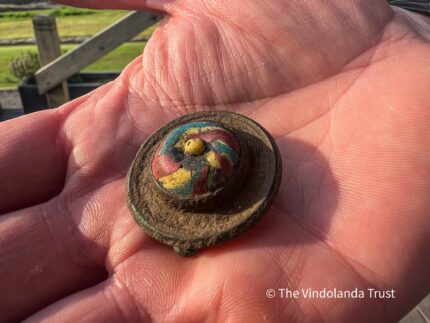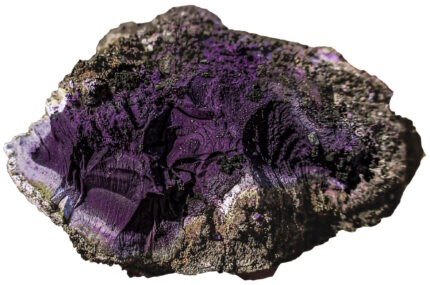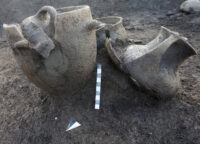
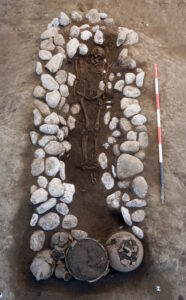 An Iron Age necropolis that predates the rise of Rome has been discovered in the town of Amorosi, 30 miles northeast of Naples. A preventative archaeology excavation before construction of a power plant at a site near the Volturno river unearthed a large funerary area in use between the third quarter of the 8th century B.C. and the late 7th century B.C. Archaeologists excavated a total of 88 tombs, both cinerary and inhumation burials, replete with grave goods identifying them as belonging to the Culture of the Pit Tombs, a pre-Samnite people that inhabited the interior of the region that is today known as Campania.
An Iron Age necropolis that predates the rise of Rome has been discovered in the town of Amorosi, 30 miles northeast of Naples. A preventative archaeology excavation before construction of a power plant at a site near the Volturno river unearthed a large funerary area in use between the third quarter of the 8th century B.C. and the late 7th century B.C. Archaeologists excavated a total of 88 tombs, both cinerary and inhumation burials, replete with grave goods identifying them as belonging to the Culture of the Pit Tombs, a pre-Samnite people that inhabited the interior of the region that is today known as Campania.
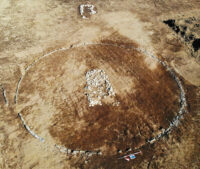
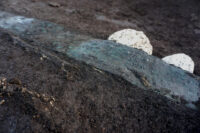 The grave goods evince distinct gender differences. Males were buried with weapons, while women’s graves contained jewelry and ornaments made of bronze, amber and worked bone. Both men and women were buried with pottery of various shapes and sizes, usually placed at the feet of the deceased. Some burials were notable for the exceptional objects, for example a large, richly decorated bronze belt found in one grave. In addition to the pit tombs, two stand-out graves in the literal sense were large mound burials 50 feet in diameter that must have belonged to the highest ranking elites of the community at that time.
The grave goods evince distinct gender differences. Males were buried with weapons, while women’s graves contained jewelry and ornaments made of bronze, amber and worked bone. Both men and women were buried with pottery of various shapes and sizes, usually placed at the feet of the deceased. Some burials were notable for the exceptional objects, for example a large, richly decorated bronze belt found in one grave. In addition to the pit tombs, two stand-out graves in the literal sense were large mound burials 50 feet in diameter that must have belonged to the highest ranking elites of the community at that time.
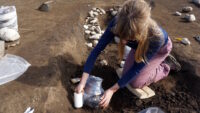
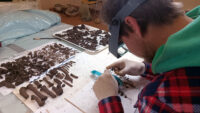 The archaeological team recovered several parts of the graves in soil blocks. The local Superintendency of Archaeology of Caserta has enlisted experts to carry out micro-excavations of the soil blocks in a warehouse laboratory specially set up for this task. The materials they recover will be analyzed, as will the bone remains and the soil itself.
The archaeological team recovered several parts of the graves in soil blocks. The local Superintendency of Archaeology of Caserta has enlisted experts to carry out micro-excavations of the soil blocks in a warehouse laboratory specially set up for this task. The materials they recover will be analyzed, as will the bone remains and the soil itself.
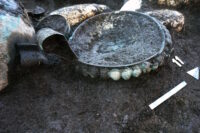
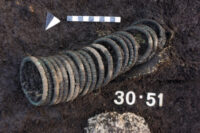 The municipality of Amorosi has begun to plan a museum to exhibit the archaeological treasures found in the excavation (and future ones) in the hope of attracting cultural heritage tourism. Next year is a Jubilee year, and millions of visitors are expected to descend on Italy. The town is moving quickly to get a museum up and running to take advantage of the influx of Jubilee crowds.
The municipality of Amorosi has begun to plan a museum to exhibit the archaeological treasures found in the excavation (and future ones) in the hope of attracting cultural heritage tourism. Next year is a Jubilee year, and millions of visitors are expected to descend on Italy. The town is moving quickly to get a museum up and running to take advantage of the influx of Jubilee crowds.
